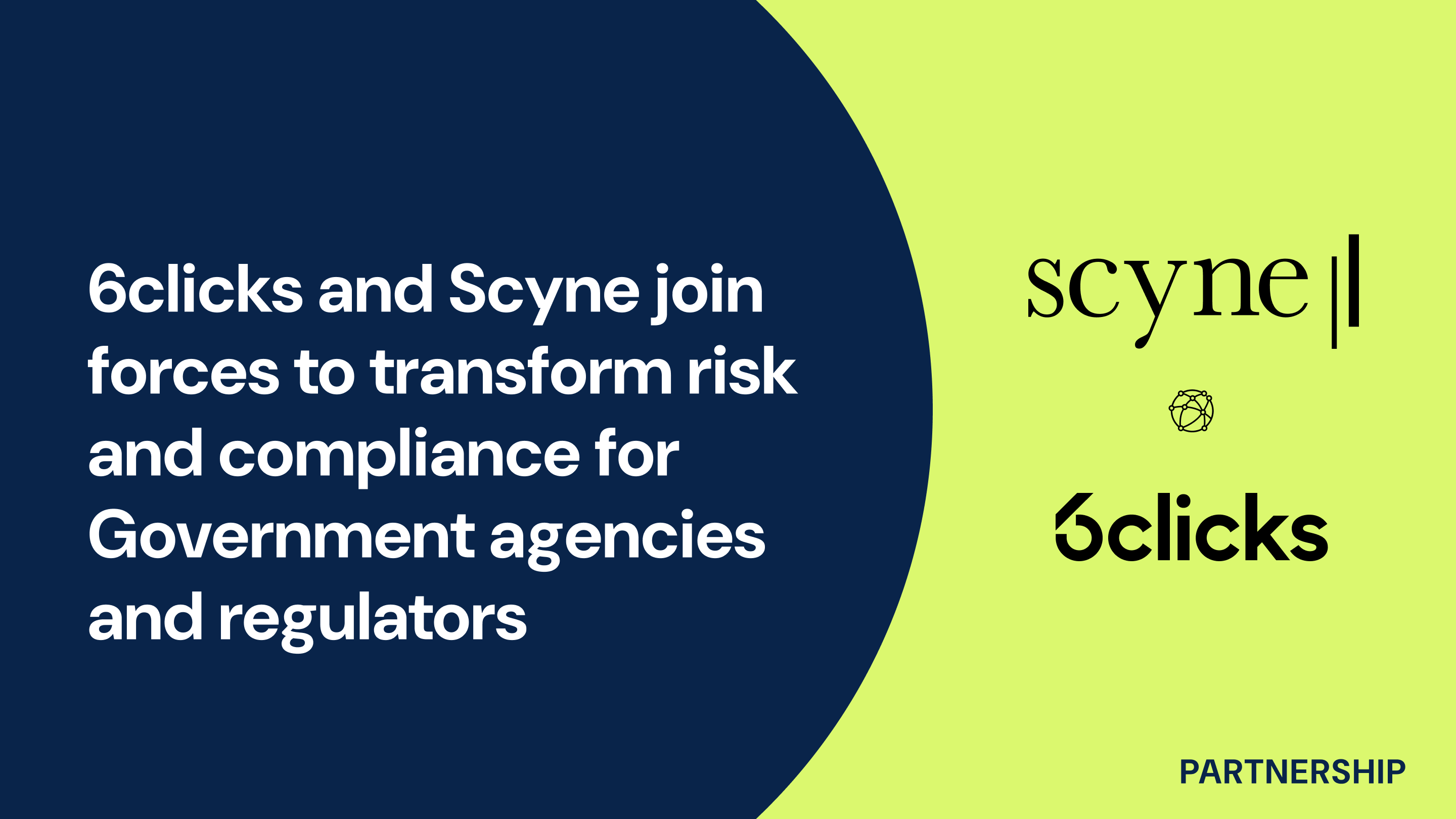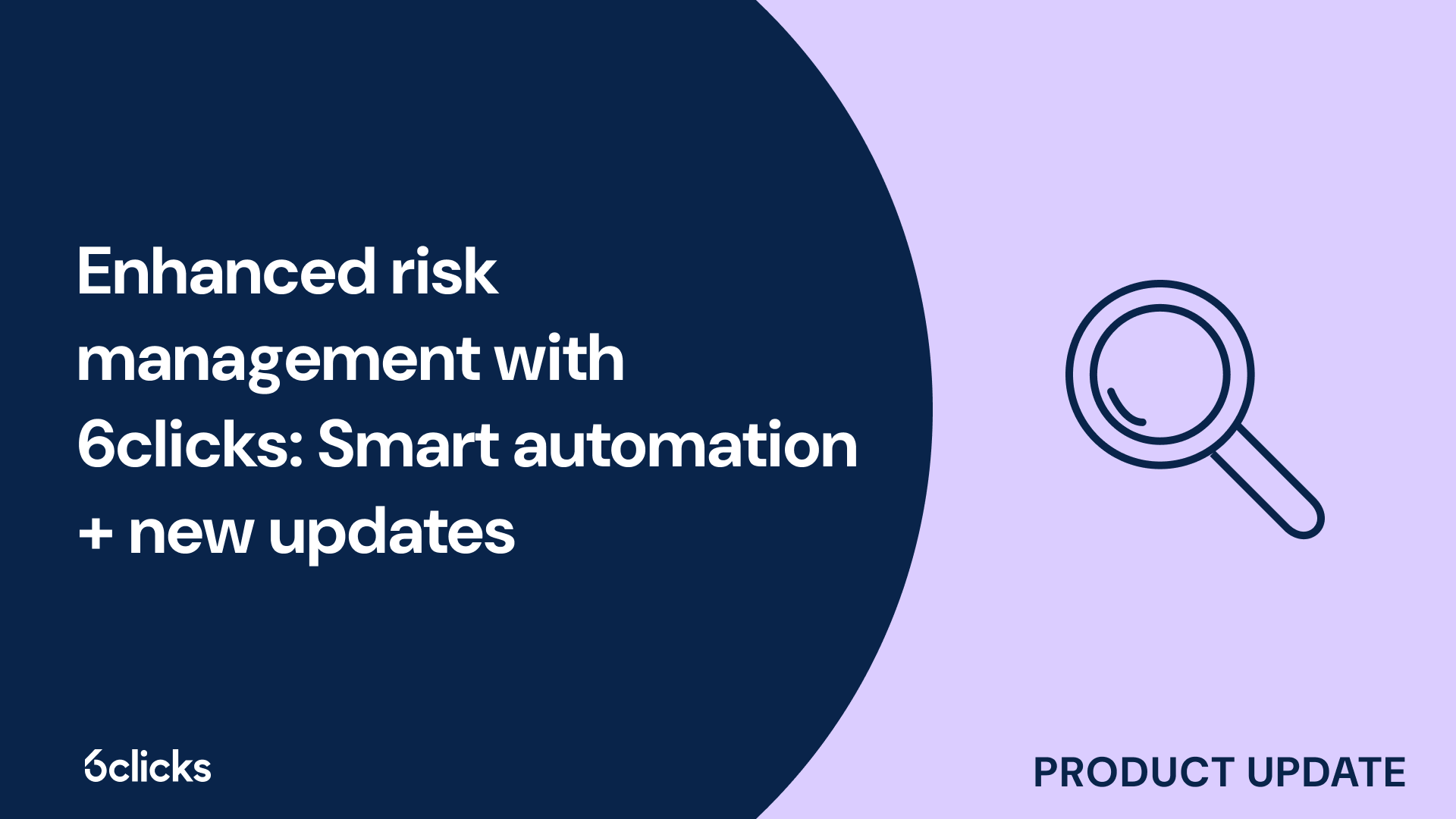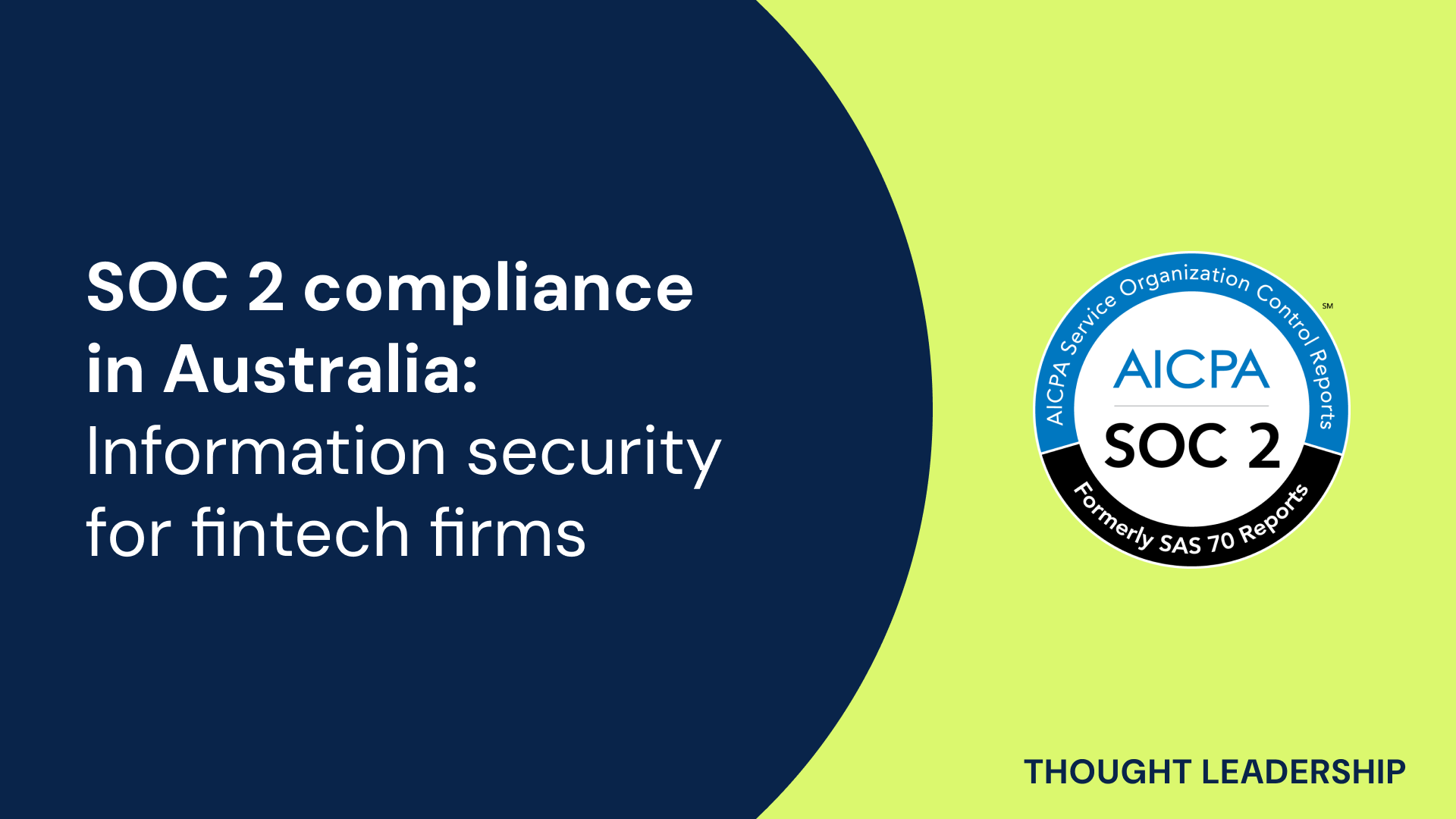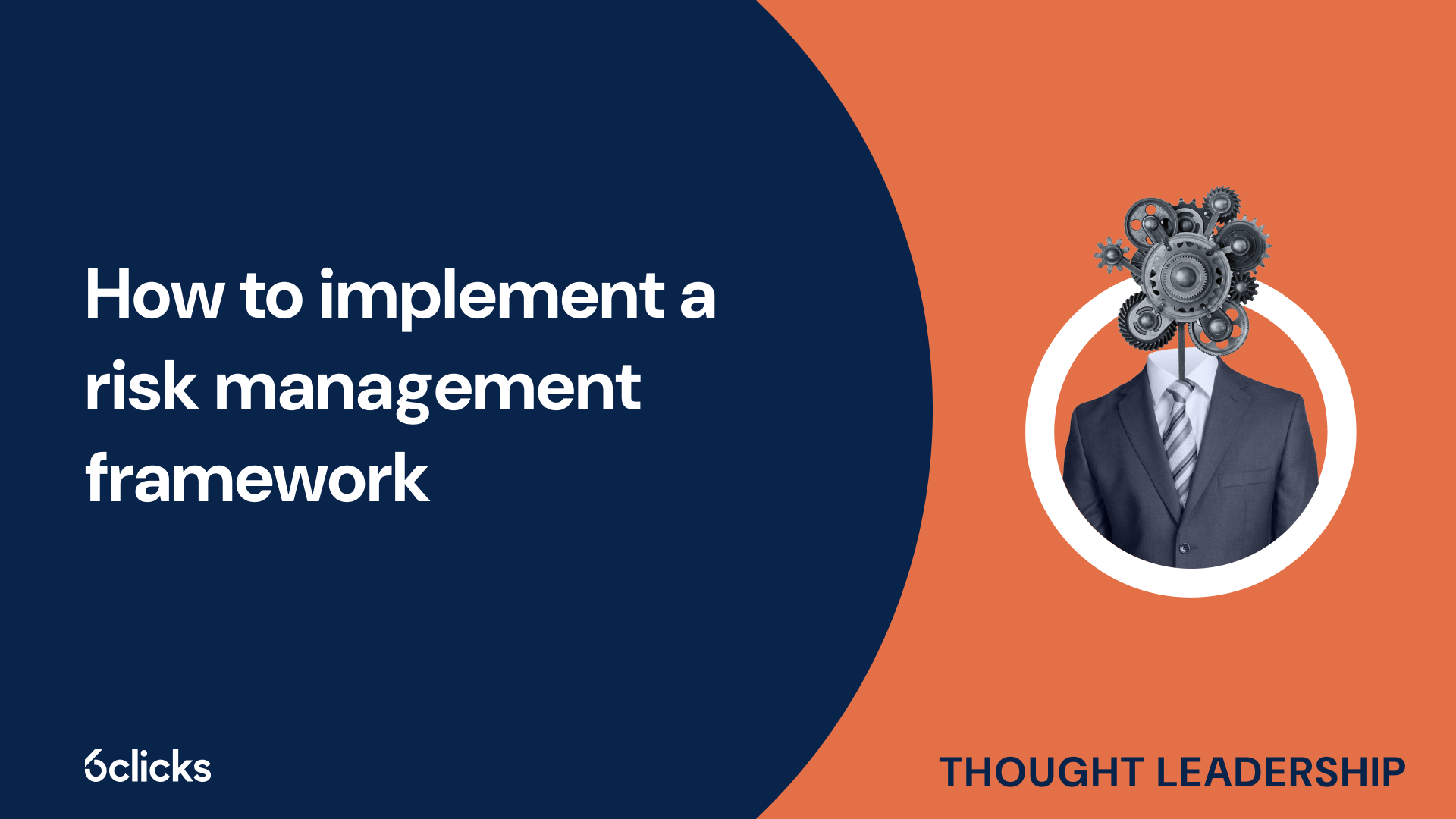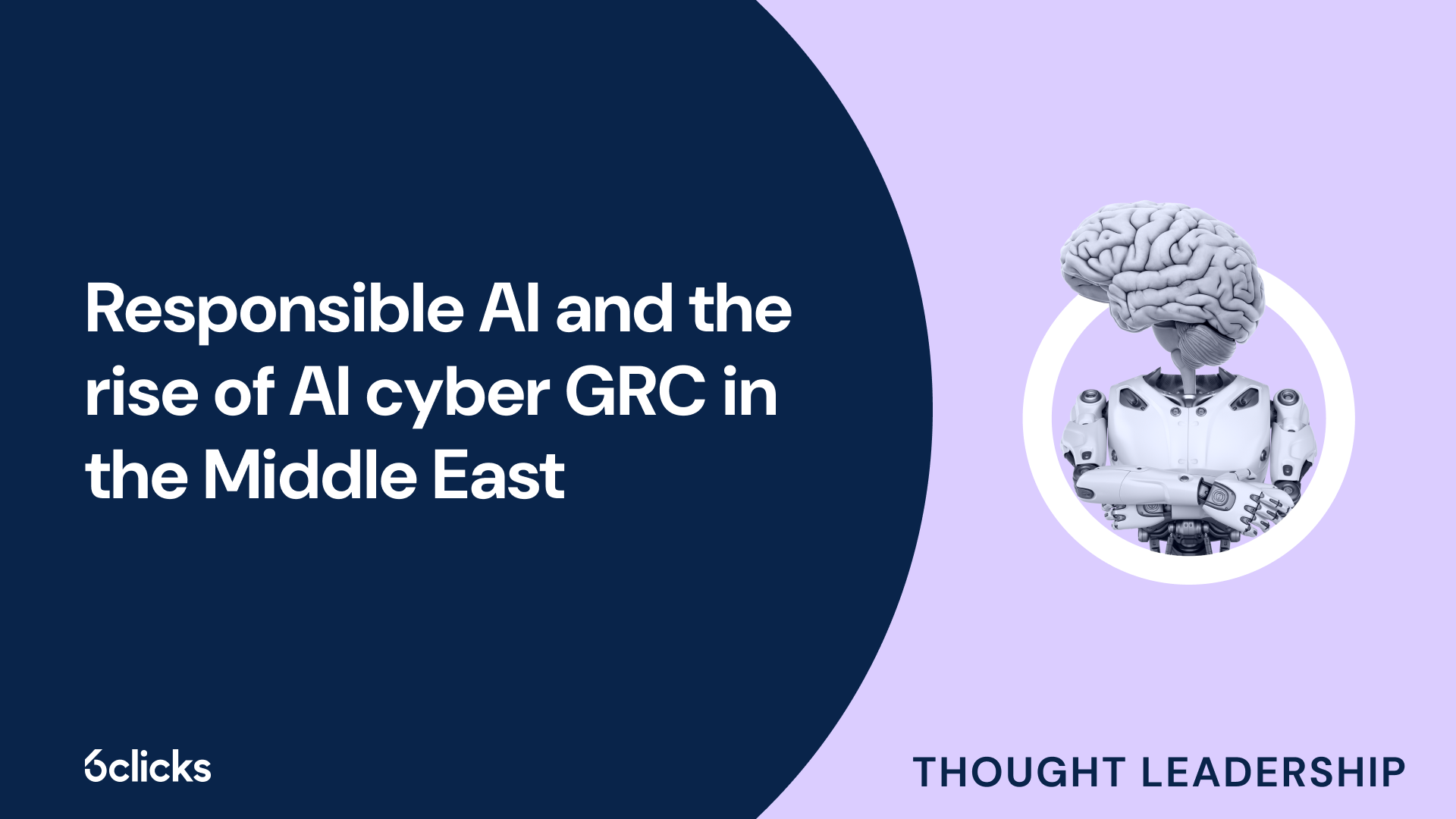The GRC buyer’s guide for 2025: Building resilience with AI-powered, federated solutions
Discover the ultimate GRC buyer's guide for 2025! Uncover how AI-powered, federated solutions transform compliance and security management for industries like government, aerospace, banking, and more. Learn about centralized control, continuous compliance, and advanced cyber GRC capabilities. Download now!
-1.png?width=200&height=249&name=Group%20193%20(1)-1.png)
The GRC buyer’s guide for 2025: Building resilience with AI-powered, federated solutions
What is GRC?
GRC, or Governance, Risk Management, and Compliance, is a discipline that helps organizations in various industries identify, assess, and control risks while ensuring compliance with regulations and achieving business objectives. GRC involves the entire organization and covers a wide range of areas, including business processes, internal controls, corporate policies, and enterprise risk management. It provides a structured approach to managing risks and compliance activities, helping companies streamline their efforts and avoid duplication. Key stakeholders, including the board of directors, internal audit teams, and lines of business, play a crucial role in implementing effective GRC strategies. By taking an integrated approach to GRC, organizations can improve decision-making, meet stakeholder expectations, and ensure ethical business practices.
Who is involved in GRC?
GRC, or governance, risk, and compliance, involves the participation of individuals and teams within an organization to ensure that business objectives are met while complying with regulatory requirements. This integrated approach to risk management encompasses various functions, including finance, compliance, IT, HR, and operational teams.
At the top level, top financial and compliance executives oversee the GRC efforts within the organization. They play a vital role in setting corporate policies, aligning business processes with compliance requirements, and implementing an effective governance framework. Additionally, IT professionals are involved in ensuring that the organization's systems and data are secure and in compliance with government regulations. HR teams contribute by implementing ethical business practices and ensuring that employees are trained on compliance matters.
Operational team leaders, from different lines of business, are also involved in GRC activities. They are responsible for managing the day-to-day operations and identifying business risks that need to be addressed. These leaders work closely with the compliance teams to develop and implement effective compliance programs that align with the organization's business goals.
The implementation of GRC practices is not limited to corporate organizations but also extends to other sectors, such as higher education. In the higher education sector, GRC is crucial in managing risks related to regulatory compliance, ethical conduct, financial management, and data security. Key stakeholders in this sector, including academic leaders, administrators, and faculty members, work together to ensure that the institution operates in compliance with government regulations while upholding their mission of providing quality education.
Role of the board of directors
The board of directors plays a crucial role in the governance, risk, and compliance (GRC) efforts of an organization. As the highest governing body, the board provides strategic guidance and oversight to ensure that the organization operates in an ethical, legal, and compliant manner. They set the tone at the top by establishing corporate policies and objectives that align with regulatory requirements and stakeholder expectations. The board is responsible for overseeing the implementation of an effective governance framework, which includes establishing internal controls, performing internal audits, and managing risks. Additionally, the board ensures that the organization's compliance activities are integrated into its business processes and that there is visibility into the risks and potential impacts they may pose. By actively engaging in GRC activities, the board of directors plays a vital role in guiding the organization towards achieving its business goals while maintaining compliance with regulations and fostering ethical business practices.
Responsibilities and roles
Managing governance, risk, and compliance (GRC) involves the coordination and collaboration of various individuals and departments within an organization. These individuals and departments play distinct roles and hold responsibilities that contribute to the effective implementation and management of GRC programs.
At the top level, the C-suite, which includes the CEO, CFO, and other executives, holds ultimate responsibility for the overall performance and strategic direction of the organization. They set business objectives and ensure that the company operates in line with legal and regulatory requirements.
The board of directors provides oversight and governance, ensuring that the organization complies with relevant laws and regulations and operates ethically. They also establish corporate policies and make important decisions regarding risk management.
Within departments, individuals responsible for GRC include legal, compliance, and risk management professionals. Legal teams ensure compliance with regulations and manage legal matters, such as contracts and litigation. Compliance teams develop and implement compliance strategies and programs, ensuring adherence to laws, regulations, and corporate policies. Risk management professionals identify and assess business risks, establishing risk mitigation strategies to protect the organization.
Other departments, such as finance, HR, IT, and operations, have their own specific responsibilities within the GRC framework. They contribute by implementing internal controls, ensuring compliance with regulations and policies, and identifying and managing risks specific to their functions.
Benefits of involvement
Benefits of Involvement in GRC: Shifting from Siloed Approaches to Comprehensive Programs
Involvement in governance, risk, and compliance (GRC) offers numerous benefits for organizations seeking to stay ahead of challenges and move away from traditional, siloed approaches to risk and compliance management. By adopting an agile GRC initiative and implementing a comprehensive GRC program, organizations of any size can achieve greater coordination of processes, technologies, and people, resulting in improved efficiency, enhanced decision-making, and reduced risks.
One of the key advantages of GRC is its ability to address the miscommunications and interdepartmental tensions that often arise from a siloed approach. GRC initiatives encourage collaboration and information sharing among different departments, fostering a unified understanding of business objectives, regulatory requirements, and risk management strategies. This integrated approach eliminates duplicative efforts, ensures consistent compliance with regulations, and minimizes the potential for misalignment between various departments.
Large enterprises stand to benefit significantly from a comprehensive GRC program. These organizations often face complex compliance requirements and diverse risk profiles across different business units. GRC enables them to implement cross-organizational governance, risk, and compliance programs that provide visibility into risks and ensure alignment with stakeholder expectations. By bringing together key stakeholders from various departments, an effective GRC program facilitates better decision-making, promotes ethical business practices, and supports improved corporate governance.
Furthermore, by streamlining compliance processes and leveraging technology-enabled solutions, GRC helps organizations eliminate inefficiencies and reduce operational costs. Through automation and centralized management, GRC provides a single source of truth for compliance requirements, policies, and processes. This structured approach enables organizations to proactively monitor and manage risks, ensure compliance with regulations, and respond swiftly to emerging threats.
Role of senior management
The role of senior management in governance, risk, and compliance (GRC) is pivotal in driving the success of GRC initiatives within an organization. As the primary decision-makers and leaders of the organization, senior management plays a critical role in setting the tone from the top, establishing the organization's overall risk appetite, and promoting a culture of compliance throughout the entire organization. They are responsible for developing and implementing effective governance frameworks, ensuring that compliance activities align with business objectives and regulatory requirements. Senior management also oversees the integration of risk management practices into business processes and drives the adoption of technology-enabled solutions for efficient GRC management. By actively engaging and supporting GRC efforts, senior management provides the necessary resources, guidance, and leadership to sustain a robust GRC program and enable the organization to effectively navigate through uncertainties and challenges in an ever-changing business environment.
Establishing GRC programs and strategies
Establishing GRC (Governance, Risk, and Compliance) programs and strategies is a crucial endeavor for organizations in today's complex business landscape. Thorough planning and implementation are key to effectively managing risks, meeting regulatory requirements, and aligning business objectives.
The first step in establishing GRC programs is to identify specific goals. Organizations need to define their risk appetite, determine regulatory compliance needs, and prioritize business processes that require enhanced control. By setting clear objectives, companies can focus their efforts and resources on areas that matter the most.
However, it is important to recognize that GRC strategies are not set in stone. As the business landscape evolves, organizations need to be flexible and be prepared to make necessary adjustments to their programs. Regular internal audits and assessments can help identify gaps and weaknesses, allowing for timely adjustments to the GRC framework.
Allocating appropriate resources is critical to the success of GRC programs. This includes investing in technology solutions, staff training, and hiring the right expertise. By ensuring that the necessary resources are in place, organizations can mitigate risks more effectively and achieve better compliance outcomes.
Managing stakeholder expectations is another significant challenge in establishing GRC programs. Organizations must communicate the goals, benefits, and limitations of the program to gain buy-in from internal and external stakeholders. By fostering a culture of accountability, organizations can enhance transparency and build trust with their stakeholders.
Assigning responsibility for risk management and compliance
Assigning responsibility for risk management and compliance is a crucial step in implementing a successful GRC (Governance, Risk, and Compliance) program. Organizations must carefully determine who will be responsible for these tasks to ensure accountability and effective management of risks and compliance requirements.
The process of assigning responsibility begins with identifying the key areas of risk and compliance within the organization. This includes assessing the business objectives, internal audits, regulatory requirements, and business processes. By understanding these factors, organizations can determine the individuals or teams that are best suited to handle specific aspects of risk management and compliance.
Common roles and responsibilities assigned in this area include compliance officers, risk managers, and internal audit teams. Compliance officers are responsible for ensuring that the organization complies with relevant laws, regulations, and industry standards. Risk managers, on the other hand, focus on identifying, assessing, and mitigating risks that can impact the organization's objectives. Internal audit teams play a critical role in evaluating the effectiveness of internal controls and ensuring compliance with corporate policies and regulatory requirements.
Clearly defining these responsibilities is essential to ensure accountability and effectiveness. It allows individuals or teams to understand their specific roles and expectations, which in turn leads to more efficient risk management and compliance activities. By assigning responsibility, organizations can avoid duplication of efforts, have a single source of truth, and provide visibility into risks. This structured approach promotes better decision-making and improves overall governance within the organization.
Setting expectations for performance and reporting on results
Setting expectations for performance and reporting on results is a crucial aspect of Governance, Risk, and Compliance (GRC) processes. This process involves defining clear objectives and performance standards, as well as establishing mechanisms for monitoring and reporting on progress.
By setting expectations, organizations can ensure that all stakeholders are aligned with the business goals and objectives. This includes defining key performance indicators (KPIs) that are relevant to the organization's compliance requirements, regulatory obligations, and strategic objectives. These KPIs help measure the effectiveness of risk management and compliance activities, as well as track progress towards organizational goals.
Reporting on results is equally important as it provides a transparent view of an organization's performance in relation to the established expectations. This includes regular communication of performance metrics, compliance status, and any potential gaps or issues that require attention. Effective reporting allows organizations to identify areas of improvement, make data-driven decisions, and take corrective actions if necessary.
Key steps involved in establishing performance expectations and reporting mechanisms include:
- Defining clear and measurable objectives: This involves aligning objectives with business strategies and compliance requirements.
- Identifying relevant KPIs: Organizations need to identify the specific KPIs that will measure performance and compliance effectively.
- Establishing reporting processes: Organizations need to determine the frequency, format, and channels for reporting on results.
- Implementing monitoring mechanisms: This involves deploying tools and software solutions that enable real-time tracking and monitoring of performance metrics.
- Analyzing data and taking action: Organizations need to analyze the reported data to identify trends, patterns, and potential areas of improvement. This analysis helps in making data-driven decisions and taking proactive measures to maintain compliance.
Technology plays a vital role in this process. GRC software solutions enable organizations to automate data collection, streamline reporting processes, and provide real-time insights and analytics. This allows for effective performance monitoring and ensures that organizations can respond promptly to emerging risks and compliance challenges.
Role of internal audit teams
Internal audit teams play a crucial role in an organization's governance, risk, and compliance (GRC) framework. These teams are responsible for evaluating and assessing the effectiveness of a company's internal controls, business processes, and risk management practices. By conducting independent and objective reviews, internal audit teams help identify any potential gaps or deficiencies in the organization's operations, ensuring compliance with regulatory requirements and mitigating business risks. Their findings and recommendations provide critical insights to the management and board of directors, enabling them to make informed decisions and improve overall organizational performance. Moreover, internal audit teams contribute to the development and implementation of effective compliance programs, ensuring that the organization's business units operate in accordance with the highest ethical and legal standards. Through their comprehensive audits, internal audit teams help maintain an efficient and transparent internal control environment, promoting trust and accountability within the organization.
Ensuring compliance with regulatory requirements
Ensuring compliance with regulatory requirements is crucial for any organization involved in Governance, Risk, and Compliance (GRC). Regulatory compliance refers to adhering to laws, regulations, and guidelines set forth by governing bodies to protect the interests of various stakeholders and promote ethical business practices.
Failure to comply with regulatory requirements can have significant consequences. Firstly, non-compliance can result in financial loss. Organizations may face hefty fines, penalties, and legal fees. Additionally, non-compliance may hinder business operations, resulting in decreased productivity and revenue loss. Secondly, non-compliance can lead to reputational damage. Failure to meet regulatory standards can erode customer trust, tarnish the organization's image, and negatively impact its relationships with external stakeholders.
Maintaining compliance can be challenging and complex. Organizations must keep track of various regulatory changes, interpret their impact, and implement necessary measures to ensure compliance throughout the company. Moreover, businesses often operate in multiple jurisdictions, each with its own set of regulations, adding to the complexity.
To effectively manage regulatory compliance, organizations can leverage intelligent technologies and modern GRC software solutions. These solutions provide centralized platforms for compliance management, enabling companies to streamline compliance activities, automate processes, and maintain an up-to-date understanding of regulatory requirements. By using these tools, businesses can enhance their ability to identify and address compliance gaps, proactively mitigate risks, and ultimately protect themselves from financial loss and reputational damage.
Investigating fraudulent activity and other issues
Internal audit teams play a crucial role in the governance, risk management, and compliance (GRC) framework of an organization. They are responsible for investigating fraudulent activity and other issues that may arise within the company.
One of the main responsibilities of internal audit teams is to ensure compliance with regulatory requirements. They are tasked with monitoring and assessing the company's adherence to laws, regulations, and internal policies. By conducting thorough audits and inspections, these teams help identify any deficiencies in compliance and recommend corrective actions.
In addition to compliance, internal audit teams also play a vital role in strengthening control environments to minimize risk exposure. They assess the effectiveness of internal controls, evaluate potential risks, and provide recommendations for improvement. By proactively identifying and addressing risks, these teams help prevent fraud, operational errors, and other issues that could have a significant impact on the organization.
Investigating fraudulent activity is another key area of focus for internal audit teams. They use their expertise and analytical skills to detect and investigate any suspected fraudulent activities within the organization. Through their investigations, they gather evidence, interview employees, and collaborate with other stakeholders to uncover any wrongdoing and prevent further harm to the company.
Strengthening control environments to minimize risk exposure
Business process owners play a crucial role in governance, risk management, and compliance (GRC) by developing policies and procedures to meet regulatory requirements and strengthening control environments to minimize risk exposure. These individuals are responsible for overseeing specific business processes within an organization and ensuring that they are carried out efficiently and in compliance with relevant laws and regulations.
One of the key responsibilities of business process owners is to develop and implement policies and procedures that align with regulatory requirements. They work closely with internal audit teams to identify the specific regulations that apply to their business processes and develop appropriate policies and procedures to ensure compliance. By establishing clear guidelines and procedures, business process owners help ensure that employees understand their responsibilities and follow the appropriate steps to meet regulatory requirements.
In addition to compliance, business process owners also play a vital role in strengthening control environments to minimize risk exposure. They work with internal audit teams to identify potential risks associated with their business processes and develop controls to mitigate those risks. By implementing effective control measures, business process owners help minimize the likelihood of errors, fraud, and other risks that could have a negative impact on the organization.
Role of business process owners
The role of business process owners is crucial to the success and compliance of an organization. As the individuals responsible for the design, implementation, and improvement of business processes, they have a direct impact on the efficiency and effectiveness of operations. Business process owners work closely with various stakeholders, including internal audit teams, to ensure that policies and procedures align with regulatory requirements. They play a vital role in identifying and mitigating risks associated with their processes, implementing effective controls, and fostering a culture of compliance within the organization. By fulfilling their responsibilities, business process owners contribute to the overall success, sustainability, and compliance of the organization.
Developing policies and procedures to meet regulatory requirements
Developing policies and procedures to meet regulatory requirements is a crucial aspect of ensuring compliance within an organization. Companies must identify and understand the specific regulations that apply to their business and then create policies and procedures that address those requirements.
The first step in this process is conducting thorough research. Companies need to identify the relevant regulatory requirements that apply to their industry and understand the specific obligations and standards that must be met. This research may involve studying government regulations, industry guidelines, and best practices.
Next, it is important to consult with legal and compliance experts. These professionals can provide valuable insights and guidance on interpreting the regulations and determining the appropriate actions to take. They can help translate complex legal language into practical policies and procedures that meet the regulatory requirements.
Once the research and consultation phase is complete, it is time to document the policies and procedures. This involves clearly defining the steps and processes that need to be followed to ensure compliance. Documenting these policies and procedures provides a reference point for all employees and stakeholders to follow and ensures consistency across the organization.
Regular reviews and updates are also essential to maintain compliance. As regulations change and evolve, companies must monitor and update their policies and procedures accordingly.



